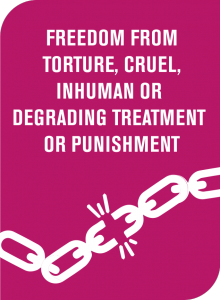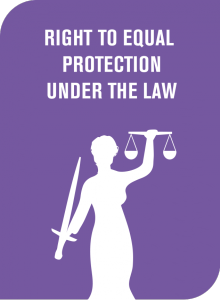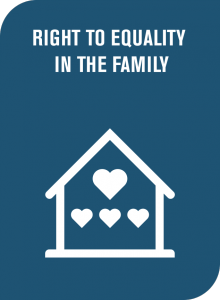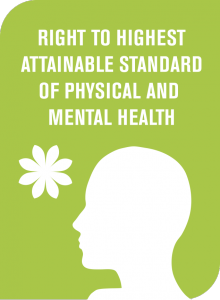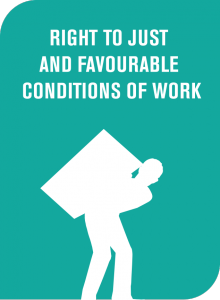Introduction | What’s in our case summaries?
Violence against women (VAW) was internationally recognised as a violation of women’s human rights and fundamental freedoms for the first time in the early 1990s. In 1992, the Convention on the Elimination of All Forms of Discrimination against Women recognised that gender-based violence is a form of discrimination, which is illegal under international human rights law. In 1993, at the World Conference on Human Rights in Vienna, all states recognised that: “The human rights of women and of the girl-child are an inalienable, integral and indivisible part of universal human rights. The full and equal participation of women in political, civil, economic, social and cultural life, at the national, regional and international levels, and the eradication of all forms of discrimination on grounds of sex are priority objectives of the international community. Gender-based violence and all forms of sexual harassment and exploitation, including those resulting from cultural prejudice and international trafficking, are incompatible with the dignity and worth of the human person, and must be eliminated.” In its Declaration on the Elimination of Violence against Women, the General Assembly of the United Nations identified the various forms of violence against women and girls, in homes, in communities, and perpetrated by states, and called on states to take a variety of actions to remedy violence against women, including legal reform, gathering data, improving police and medical responses to gender-based violence, and recognising the importance of women’s civil society organisations working on the issue.
This constellation of human rights standards has been the basis of UN and regional action to eradicate violence against women.
Recognition that violence against women is a human rights violation fundamentally changed the understanding of states’ responsibility to eradicate violence against women, and to prevent, investigate and punish crimes of violence against individual women. This is because human rights agreements have two parts: rights and duties. Human rights belong to every single person, without exceptions. To ensure this is guaranteed, states have a duty to respect, protect and fulfil each human right. ‘Respect’ prevents the state from interfering with or limiting the full enjoyment of human rights. ‘Protect’ requires the state take action to ensure private individuals do not interfere with or abuse the human rights of others. ‘Fulfil’ means the state take all appropriate measures to guarantee the full realisation of human rights for each individual. This means that states are in violation of their human rights obligations (i.e. to respect, protect and fulfil human rights) if they do not take adequate steps to end violence against women. Since the legal and political landmarks of the early 1990s, states’ specific obligations to tackle VAW continue to be outlined through case law at the national, regional and international levels. This page is dedicated to some of those landmark cases and the women’s stories behind them.
The declaration following the Vienna Conference on Human Rights stated that (paragraph 5): “All human rights are universal, indivisible and interdependent and interrelated.” Where one human right is violated, other rights are also affected. Above are seven human rights commonly associated with VAW (see the Declaration on the Elimination of Violence against Women; CEDAW General Recommendation No. 19). While this list may not cover all the human rights that violence against women can violate, these rights are a starting point for: 1. Understanding how each right is affected by violence against women; 2. How these interpretations have defined specific obligations each state has to end violence against women.
 What’s in our case summaries?
What’s in our case summaries?
Each case starts with a heading, containing the following components:
- Title of the case
- Year the case was decided
- Significance of the case
- Human rights that were violated (shown by icons)
- Forms of violence committed
- Who the case was decided
For example:
Domestic violence, gender-based killing
European Court of Human Rights
Each case summary contains the following information:
What happened?
To fully understand the decision of the court (or other judicial or quasi-judicial body), it is important to understand the events that took place. In legal terms, this section would be called the ‘facts of the case’. Here, you will be introduced to the women’s stories behind the landmark decisions.
What was the decision?
This section is a summary of the court’s decision. The decisions connect the ‘facts of the case’ to the specific human rights the court decides were violated. This will also include a summary of actions the state was required to take as a result.
Learning from other institutions
This section will include a list of authorities, bodies, and relevant decisions made elsewhere (by other judicial or quasi-judicial bodies) which are referred to in the decision. We’ve included the paragraph number in the relevant case document, so that you can easily find the reference.
Why is this important?
The courts, commissions, committees and tribunals we’ve listed may only accept individual complaints against states who have agreed to be bound by the terms of the relevant treaty (i.e. the treaty that created the relevant body and provides the framework for the authority’s work). This means you will not be able to file a complaint against a state that is not a party to the relevant treaty or accepted the authority of the relevant body. If you can’t access the Court/Committee/Commission you’re reading about, what’s the point in learning about it?
In fact, judgments can have impact in other jurisdictions. Jurisprudence is an authoritative interpretation of the content of the law that applies to all states parties to that convention. Sometimes what a decision says can be more important than who has said it. Decisions on cases about violence against women will often include the work of other bodies, using their evaluations to interpret how human rights are applied in certain contexts. Knowing what other bodies have said about violence against women expands our knowledge of state obligations under each right and can be used as authoritative interpretations of what each person is guaranteed to fully enjoy her rights.
Significance
This section will explain the significance of the case through broader global and regional perspectives, explaining how it changed women’s lives and the way we understand states obligations to end violence against women.
Icon Key






